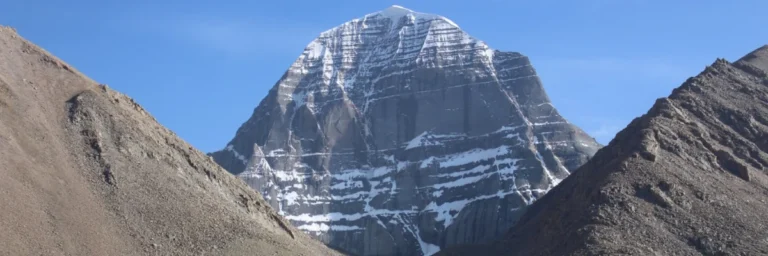
Introduction to Best Time for Trekking in Nepal
Picking the best time for trekking in Nepal can make or break your adventure. Nepal’s breathtaking mountains, plant and animal life, and rich culture draw trekkers from all over the world.
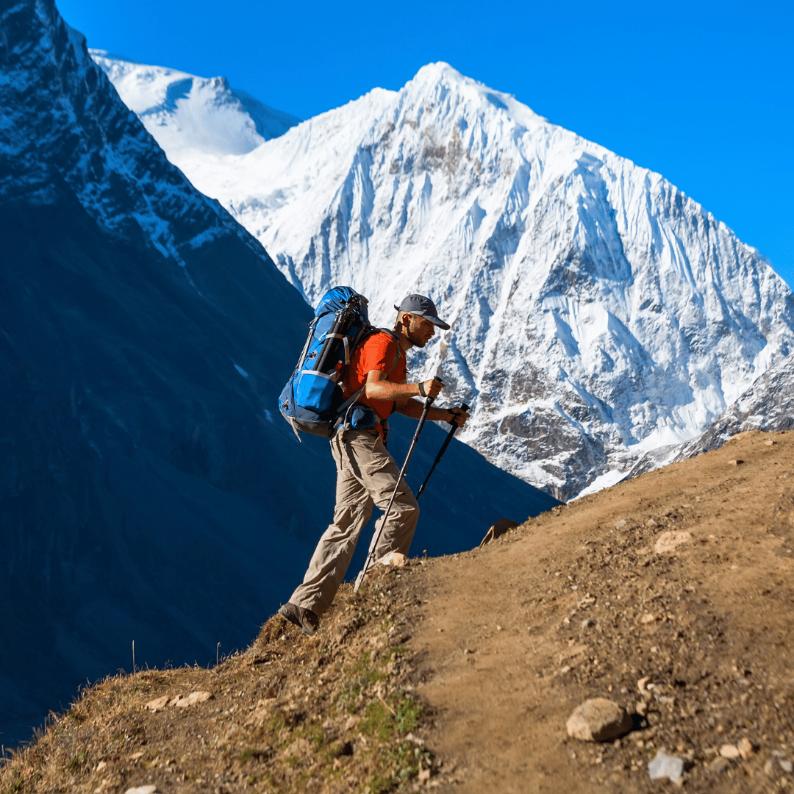
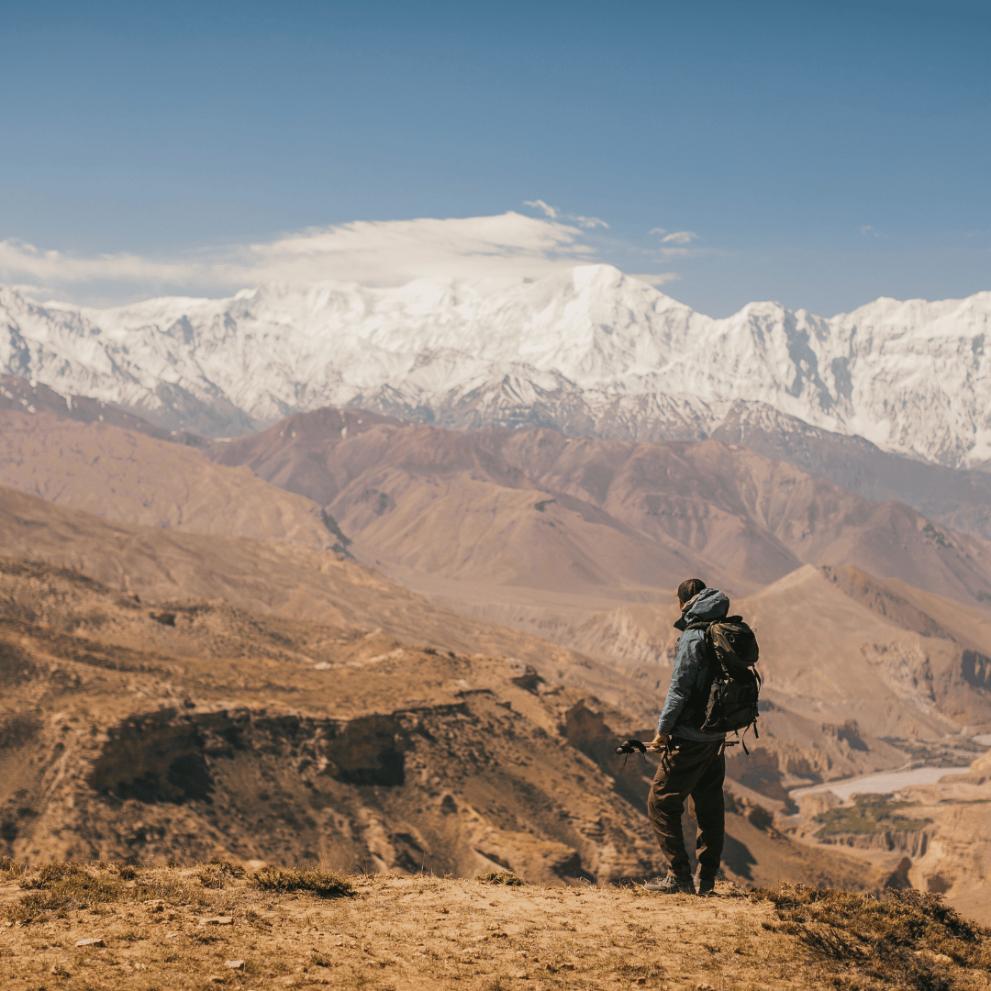
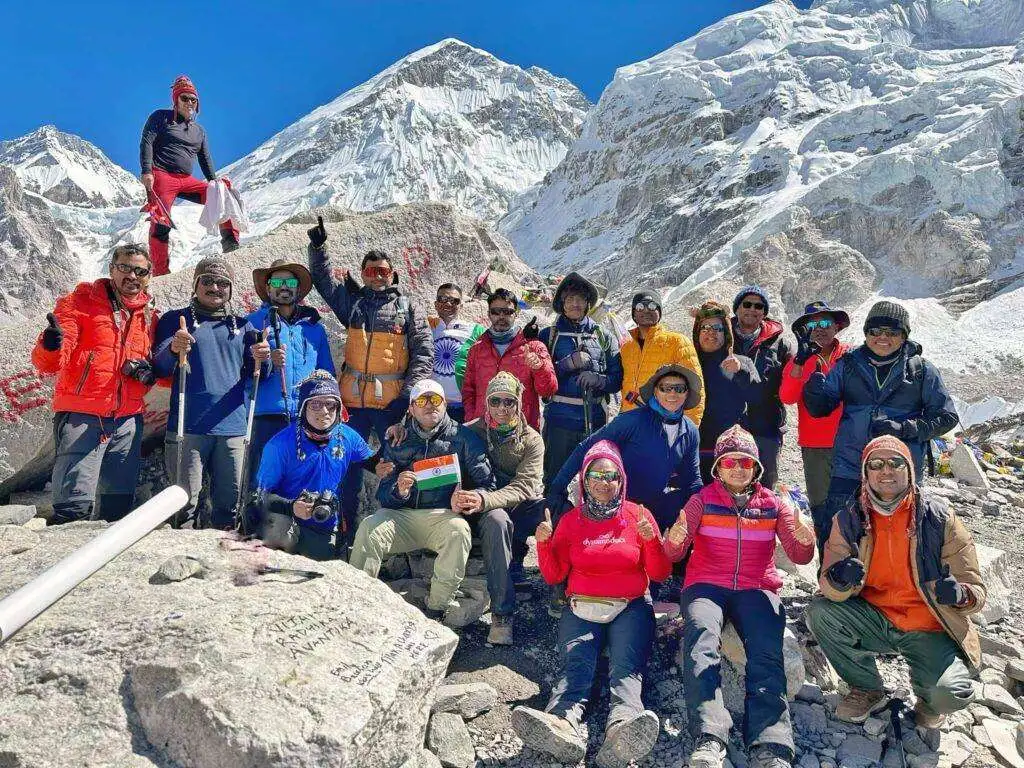
Nepal’s weather changes a lot throughout the year, and this affects trekking conditions. You will want to think about things like clear views, comfortable temperatures, and avoiding heavy rains or extreme cold. The right timing can mean the difference between great mountain views and disappointing fog, or between pleasant walks and muddy, slippery trails. But when is the best time for Trekking in Nepal? Let’s explore the ideal seasons for trekking in Nepal and help you plan your trip.
Table of Contents
The Spring Season (March-April)
Spring is a very popular season for trekking in Nepal. It can be taken to be one of the seasons which answers to the the best time for trekking in Nepal. It offers a special experience for adventure lovers. Here are things to consider when planning your spring trek in Nepal:
Description of the spring season in Nepal
Spring season starts in Nepal from March to April. It comes right after winter. Spring gives out pleasant weather and vibrant landscapes. Trekkers can see a lot of flowers blooming, and the mountains are fully covered in greenery. As the days grow longer, trekkers have more daylight to enjoy the trails.
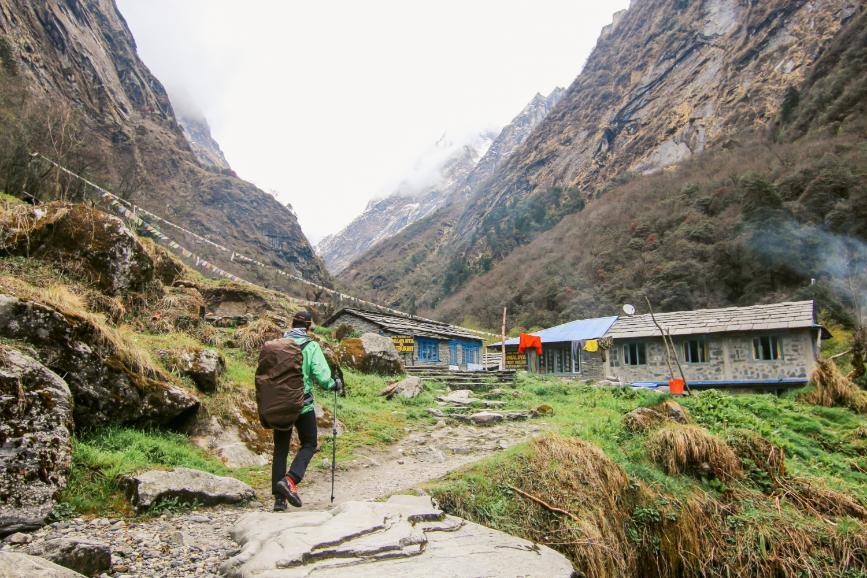
The temperatures rise gradually. This makes the daytime trekking very comfortable, though the nights can still be chilly. Despite the beautiful weather, trekking during this season can be challenging due to the trails being busier and the potential for unpredictable weather changes.
Advantages of trekking in spring
- The hills and valleys come alive with colorful rhododendron forests and other wildflowers in full bloom.
- The clear skies and mild temperatures offer excellent visibility of the snow-capped mountains. It provides breathtaking views throughout your journey.
- Spring also sees fewer crowds compared to the peak autumn season.
- Trails are generally less muddy compared to the monsoon season. This makes it easier to navigate.
Disadvantages of trekking in spring
- Spring does give occasional showers. It is important to be prepared with proper rain gear to stay dry during unexpected rainfall.
- Due to melting snow from the winter season, there might be some sections of the trail that could be slippery or challenging to cross. It is therefore important to have good trekking shoes and trekking poles for added stability.
Nepal’s springtime does provide a perfect opportunity for trekking enthusiasts as being the best time for trekking in Nepal. You can feel that the trekking trails are less crowded. This provides a more peaceful journey. While you might encounter some rain showers, they should not dampen your spirits. Just pack appropriate gear and stay alert to ensure your safety. With these simple precautions, you are all set for the best adventure among the world’s highest peaks.
The Autumn Season (October-November)
Autumn is actually one of the best times for trekking in Nepal. It has mild temperatures, good clear skies, and great landscape views.
Here’s what you need to know about trekking in Nepal during autumn as the best time for trekking in Nepal:
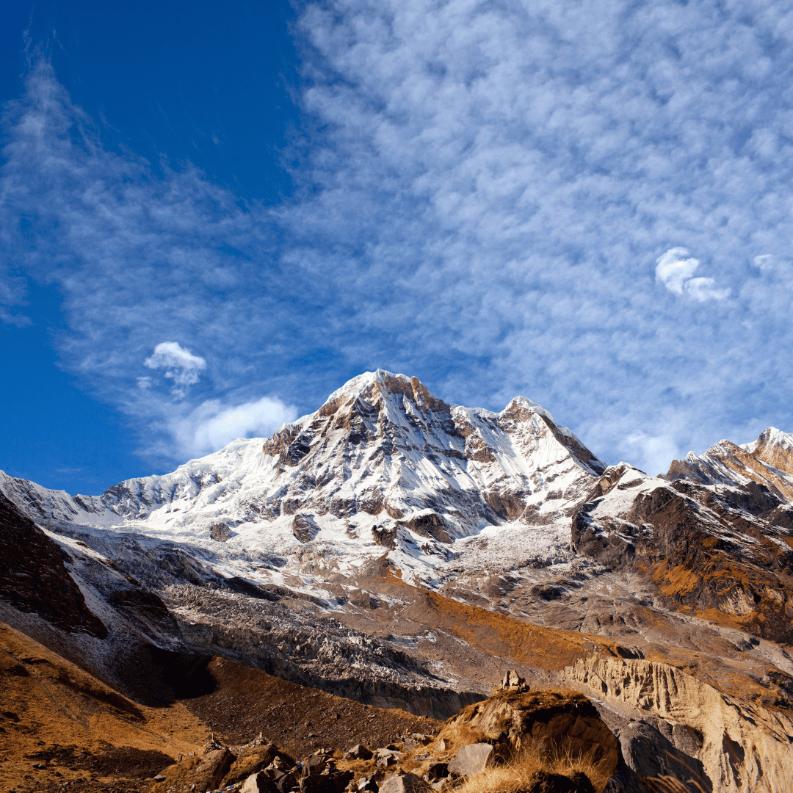
Description of the autumn season in Nepal:
Autumn in Nepal starts in the month of October and lasts until November. During this season, the monsoon rains have ended. Therefore, this time of the year brings in fresh air and clear views. The weather is generally stable, with mild temperatures during the day and cool nights. Although the days are shorter than in spring, there is still plenty of daylight for trekking so our trekkers will not have difficulty with it too.
In the mornings, a thin layer of mist often covers the mountains. This shall create a magical atmosphere which will look just marvelous. As the day progresses, the mist disappears and trekkers get to see the most beautiful views of snow-capped peaks and landscapes. The forests also change during autumn, with leaves turning golden and red. This gives that addition to the beauty of the surroundings.
Advantages of trekking in autumn:
- Ideal weather conditions: Autumn gives out very pleasant temperatures during the day making it the best time for trekking in Nepal. It makes it very comfortable for trekking. The skies are usually clear. It provides excellent visibility for enjoying mountain views.
- Less rainfall: Autumn has minimal rainfall, again making it to be the best time for trekking in Nepal. This means that you can expect dry trails and lower chances of encountering landslides or floods.
- Opportunities for festivals and cultural experiences: Autumn coincides with major festivals in Nepal, such as Dashain and Tihar. Yet another reason to be treated as the best time for trekking in Nepal. Trekking during this time gives you the chance to witness traditional celebrations and interact with locals along the way.
Disadvantages of trekking in autumn:
- Busier trails compared to other seasons: Everest Base Camp and Annapurna Circuit can be quite busy. However, with proper planning and choosing less frequented trails, such as those around Pokhara, you can still enjoy a peaceful trekking experience.
- Colder temperatures at higher altitudes: As you climb to higher elevations during autumn, the temperatures can drop significantly. It is important to pack enough warm clothing and gear to stay comfortable during the trek.
Overall, autumn is a fantastic time for trekking in Nepal. The pleasant weather, great scenery, and cultural experiences make it highly recommendable for adventurers looking for great hiking experience in the Himalayas.
Winter Trekking (December-March)
Description of the Winter Season in Nepal
Nepal’s winter season which is from December to March, will give out a very special opportunity for trekkers looking for a memorable adventure. During these months, the high mountains are fully covered in snow. The landscape can be seen as a beautiful winter wonderland. The crisp, clear air will provide amazing views of the mountains. It will look like a photographer’s dream.
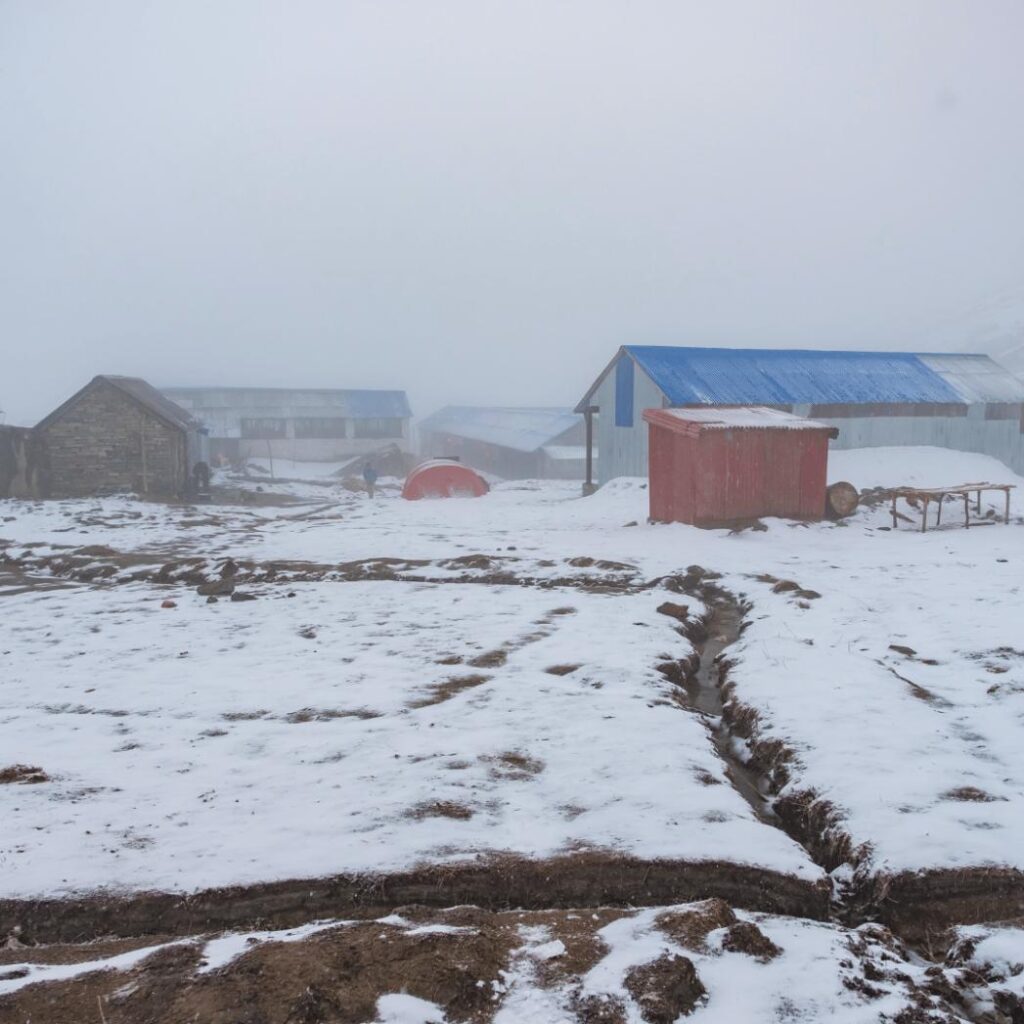
However, it is very important to note that trekking during winter can be challenging due to the cold temperatures and the need for extra gear. If you are prepared to face the cold and dress warmly, winter is a wonderful time to explore too.
Advantages of Trekking in Winter
- Peacefulness: The trails are less crowded. This allows for full experience with nature and the mountains.
- Clear Views: Winter air often provides great panoramic views of the snow-capped Himalayas.
- Unique Experience: Walking through snow-covered trails and witnessing frozen waterfalls adds a segment of adventure to the trek.
Disadvantages of Trekking in Winter
- Cold Temperatures: Sub-zero temperatures in high-altitude regions require proper gear and preparation to stay warm.
- Limited Accessibility: Certain high passes and remote areas may be inaccessible or challenging due to heavy snowfall.
Winter trekking in Nepal provides a distinct perspective of the Himalayas, but it requires very careful planning and appropriate cold-weather gear to make sure that you have a safe and enjoyable journey.
The Monsoon Season (June-September)
Trekking in Nepal during the monsoon season is actually very challenging. Monsoon, which runs from June to September, can be quite an adventure for those who enjoy a challenge. The trails are less crowded, however, the weather can be really unpredictable. It can give out frequent rain and you will surely have slippery paths.
Therefore, trekkers should be prepared for muddy trails, leeches, and limited visibility due to clouds and fog. Proper gear and a flexible itinerary are very important to navigate the conditions of monsoon trekking in Nepal.
Description of the Monsoon Season in Nepal
The monsoon season in Nepal lasts from June to September. During this time, the country experiences good heavy rainfall, high humidity, and occasional thunderstorms. The mountains and valleys come alive with lush greenery and vibrant flora, creating a picturesque landscape.
Advantages of Trekking in the Monsoon
Despite the challenges posed by the monsoon season, there are some advantages to trekking during this time:
- Fewer crowds: The monsoon season is considered the off-season for trekking in Nepal. As a result, you will encounter fewer tourists on the trails.
- Lower costs: Accommodation and transportation prices tend to be lower during the monsoon season compared to peak months.
Disadvantages of Trekking in the Monsoon
While there are advantages, it’s important to consider the disadvantages as well:
- Rainfall and muddy trails: The monsoon can bring in torrential rainfall, resulting in slippery and muddy trails. This can be really difficult for trekking and can significantly increase the risk of accidents or injuries.
- Landslides and floods: Heavy rainfall increases the likelihood of landslides and flooding in certain regions, especially near rivers or steep slopes. It is very important to stay informed about trail conditions and choose safer routes.
- Limited mountain views: Cloud cover is a common occurrence during the monsoon season. This is a major obstruction to mountain views.
It is very important to pack suitable rain gear, waterproof shoes, and be ready for changing weather conditions. Always check the weather forecast and consult experienced guides or local authorities before starting a trek during the monsoon.
When planning a trek in Nepal one should always consider factors beyond the monsoon season. Different times of the year will provide different favorable trekking conditions. Researching specific regions and trails will help you find the best time and place for your trekking adventure in Nepal.
You may also like:
Send an Enquiry
Error: Contact form not found.
© 2025 - Himalayan Trekking and Tours (P) Ltd. All Rights Reserved.


